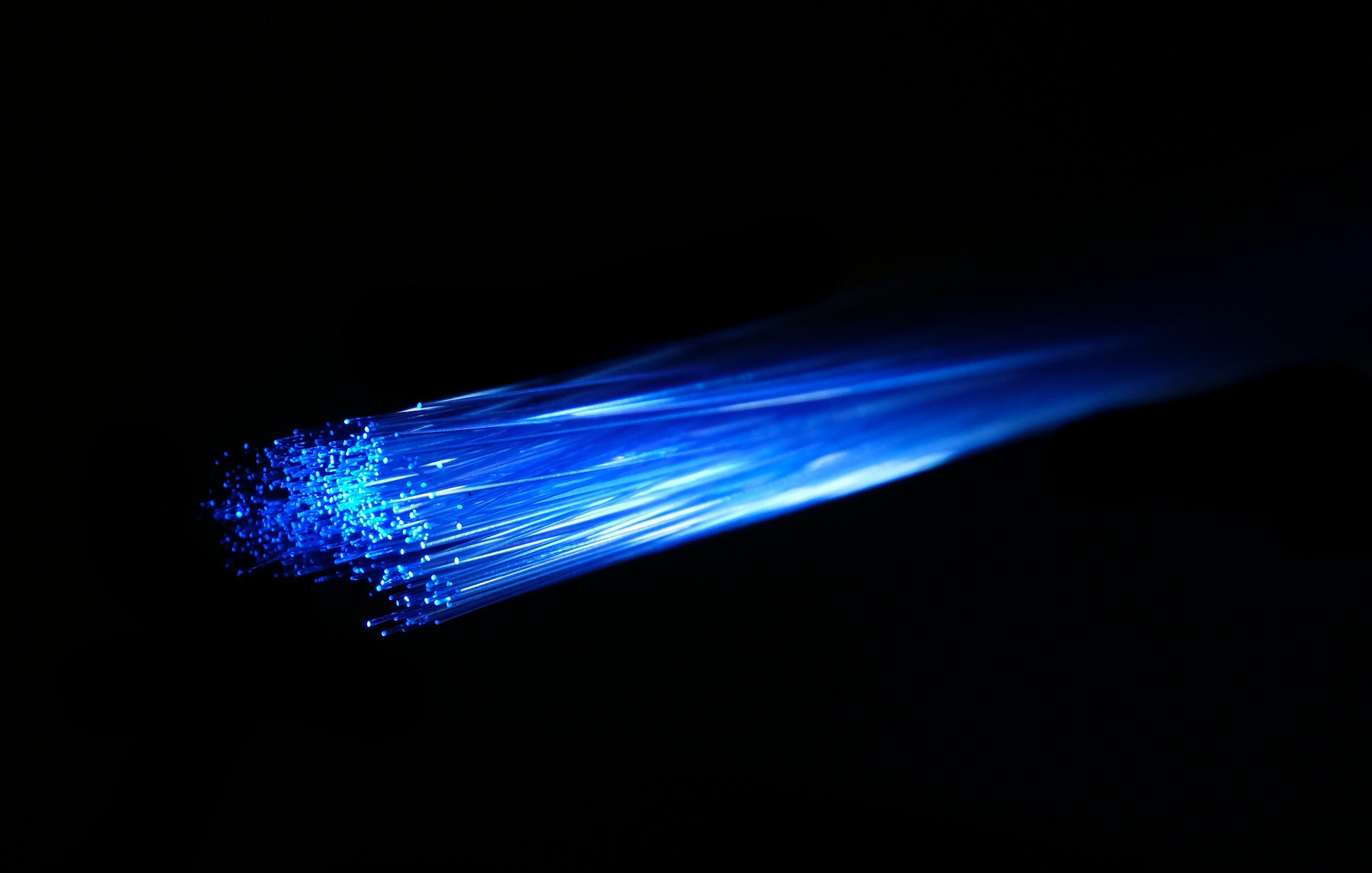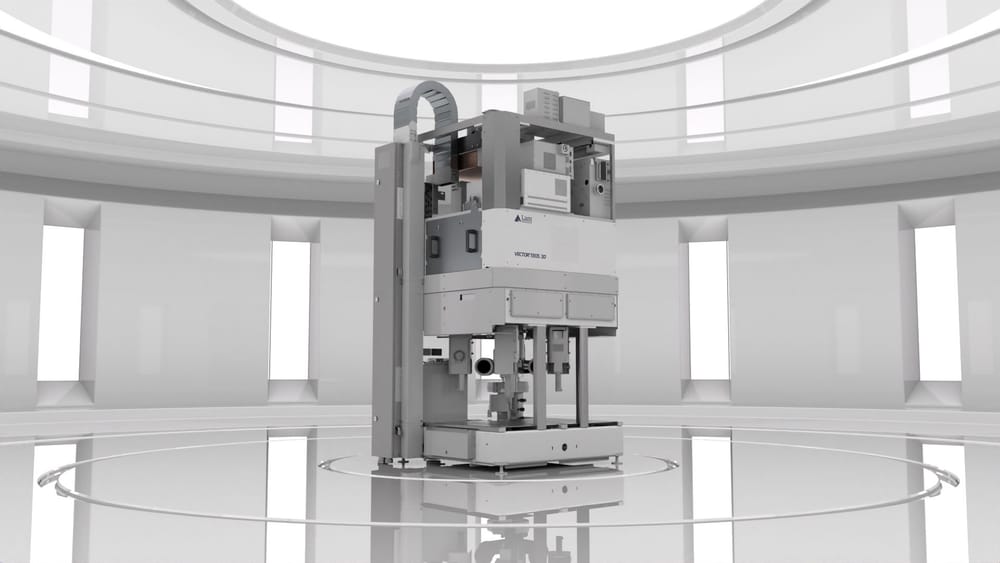Inside the AI-Factory - Part 2: Why AI Is Forcing a Move to Fiber Optics
As models scale and clusters swell, light is taking over the job of moving bits. From 800G pluggables to co-packaged optics, the race is on to deliver more bandwidth per watt—and the winners will be those who can make photons flow with the least power and the least friction.

The AI boom has turned data centers into power-hungry supercomputers stitched together by an ever-denser web of links. Those links used to be mostly copper. Increasingly, they’re glass. Hyperscalers are racing to replace short, fat bundles of copper with thin strands of fiber and increasingly sophisticated optics because models get larger, clusters get wider and faster, and copper is hitting physics and power walls at the distances and speeds these networks now demand. Analysts expect the majority of switch ports in AI back-end networks to run at 800 gigabits per second this year and push to 1.6 terabits by 2027—an aggressive cadence that makes optics less a choice than a necessity.
What’s changing is not just that more links are optical. It’s how optics are deployed. For the last decade, pluggable optical modules with digital signal processors (DSP)—those small cartridges at the front of switches and servers—did the heavy lifting. At AI scale, they are being joined by two new approaches designed to cut power and latency: linear-drive pluggable optics, which strip out power-hungry DSPs on very short reaches, and co-packaged optics, which pull the optics off the faceplate and nestle them beside the switch ASIC itself. Together with standard-setting work to move Ethernet to 200-gigabit-per-lane signaling, these tracks are rewriting the data center’s bill of materials.
Copper isn’t disappearing—close-in links inside the rack still use it—but its useful reach falls as lane speeds rise. Even with active electrical cables that re-time signals, operators find that moving to fiber saves power per bit and simplifies airflow and cable management once links stretch across racks. Marvell, a leading networking chipmaker put it plainly while unveiling a linear-optics chipset: for short-reach, high-bandwidth links, passive copper “is hitting a wall.” That, in miniature, is the optics story in AI: the network is growing faster and farther than electrons comfortably can.
The near-term workhorse is 800G pluggable optics, increasingly deployed in both the front-end (server-to-leaf) and back-end (accelerator-to-accelerator or leaf-to-spine) networks. Cisco and Dell’Oro project a swift migration to 800G ports now and 1.6T ports late this decade; market trackers say 800G shipments are driving a return to growth for optical transceivers in 2025, with first 1.6T modules beginning to contribute. That matters because AI training is exquisitely sensitive to latency and bandwidth; a slow fabric idles very expensive GPUs. The industry’s answer is more lanes, faster lanes, and more light.
To shave watts and microseconds on the shortest reaches, vendors are pushing linear-drive pluggable optics. By removing or simplifying the DSP in the module and relying on cleaner analog signal chains, LPO can reduce power and latency for links measured in meters, not tens of meters. It also reduces cost and heat density at the switch face. But LPO brings its own challenges: tighter link budgets, tougher analog engineering, and a premium on interoperability, which a new multi-source agreement is trying to tackle. Demonstrations at this year’s OFC showcased 1.6-terabit OSFP modules and 200-gigabit-per-lane light engines meant to make LPO deployable at rack scale.
Further out—and already sampling in the ecosystem—are co-packaged optics, which relocate dozens of optical engines next to a 51.2- or 102.4-terabit switch chip, eliminating the long, lossy electrical runs to front-panel modules. Broadcom has been public about its CPO switch roadmap, claiming big gains in power and bandwidth density. The industry is also coalescing around a way to feed those optical engines with external laser modules that slot into the faceplate—an OIF “ELSFP” standard designed to simplify service and meet safety rules while keeping high-power lasers away from hot silicon. The result is a fabric with lower energy per bit and less thermal strain where the switch works hardest.

Nvidia, the pace car in AI infrastructure, is laying out a path that blends these approaches. The company has discussed silicon photonics integrated with its next-gen InfiniBand and Ethernet switches, with photonics showing up first at 1.6T ports and then sliding into co-packaged designs as clusters scale to millions of GPUs. If that roadmap holds, CPO starts to look less optional and more structural as clusters expand and operators hunt for double-digit percentage power savings in the network.
Standards are marching in lockstep. IEEE’s P802.3dj task force is formalizing 200-gigabit-per-lane Ethernet PHYs and management for 800G and 1.6T operation, providing the electrical and optical “grammar” for interoperable modules and switches. The OIF, meanwhile, is defining 224G chip-to-chip interfaces to move those bits across boards with less power and complexity. On top of the physical plumbing, two new consortia are vying to define the higher-level language of AI fabrics: UALink, an open, scale-up accelerator interconnect that aims to rival Nvidia’s NVLink inside pods; and the Ultra Ethernet Consortium, a scale-out fabric tuned for all-to-all AI traffic at massive node counts. In plain English: faster lanes, cleaner board-level wiring, and smarter traffic rules so those photons carry more useful work.
The money is following. Dell’Oro expects AI back-end switching to drive tens of billions in spend over the next five years, with Ethernet winning more of the pie as it absorbs AI-specific features. LightCounting estimates the market for optics serving AI clusters will roughly double from 2024 to 2026, propelled by 800G and the first waves of 1.6T, before the next ramp tied to LPO and CPO. Module vendors such as InnoLight and Eoptolink, component makers like Coherent and Lumentum, and chip players from Broadcom to Marvell all stand to benefit as hyperscalers pivot capex from compute alone to the network that lets that compute pay off.
There are still hard problems. LPO’s allure—no DSP—means less forgiveness for temperature drift, fiber tolerances and host signal integrity, so early deployments will favor tightly controlled links and thorough testing. CPO’s promise meets the realities of manufacturing and serviceability: putting optics next to a hot ASIC raises packaging complexity and changes how operators swap failed parts. That’s why the external-laser standard matters and why vendors are building management hooks to make CPO field-maintainable. Power is a constant refrain: even if optics beat copper on energy per bit, 800G and 1.6T faceplate densities can push real-estate, airflow and thermal limits, which is one reason some customers see LPO as a transitional step and CPO as a longer-term fix.
Another storyline is protocol. For years, AI clusters leaned on InfiniBand for low-latency collectives; now Ethernet is sprinting hard with congestion control and telemetry tailored to AI traffic, while the new UALink spec tries to open up on-pod scale-up fabrics for non-Nvidia accelerators. The result won’t be a single winner so much as a layered stack: a scale-up optical fabric binding accelerators inside a pod, talking to a scale-out optical fabric that knits pods into a cluster, with optics—pluggable, linear and co-packaged—everywhere in between.
If you’re placing bets, watch three markers. First, the speed of the 1.6T transition—once 200G-per-lane Ethernet stabilizes, the case for both LPO and CPO strengthens. Second, the pace at which external-laser ecosystems mature, because safe, swappable light sources unlock CPO serviceability at scale. Third, how fast Ethernet’s AI features and UALink-class scale-up links land in commercial gear; those will dictate whether operators stick with today’s pluggables, lean into LPO, or leap to CPO in select tiers. The destination is not in doubt. AI is making data centers speak in light, and the winners will be the companies that deliver more bandwidth per watt, at scale, with the least operational drama.
Author

Investment manager, forged by many market cycles. Learned a lasting lesson: real wealth comes from owning businesses with enduring competitive advantages. At Qmoat.com I share my ideas.




